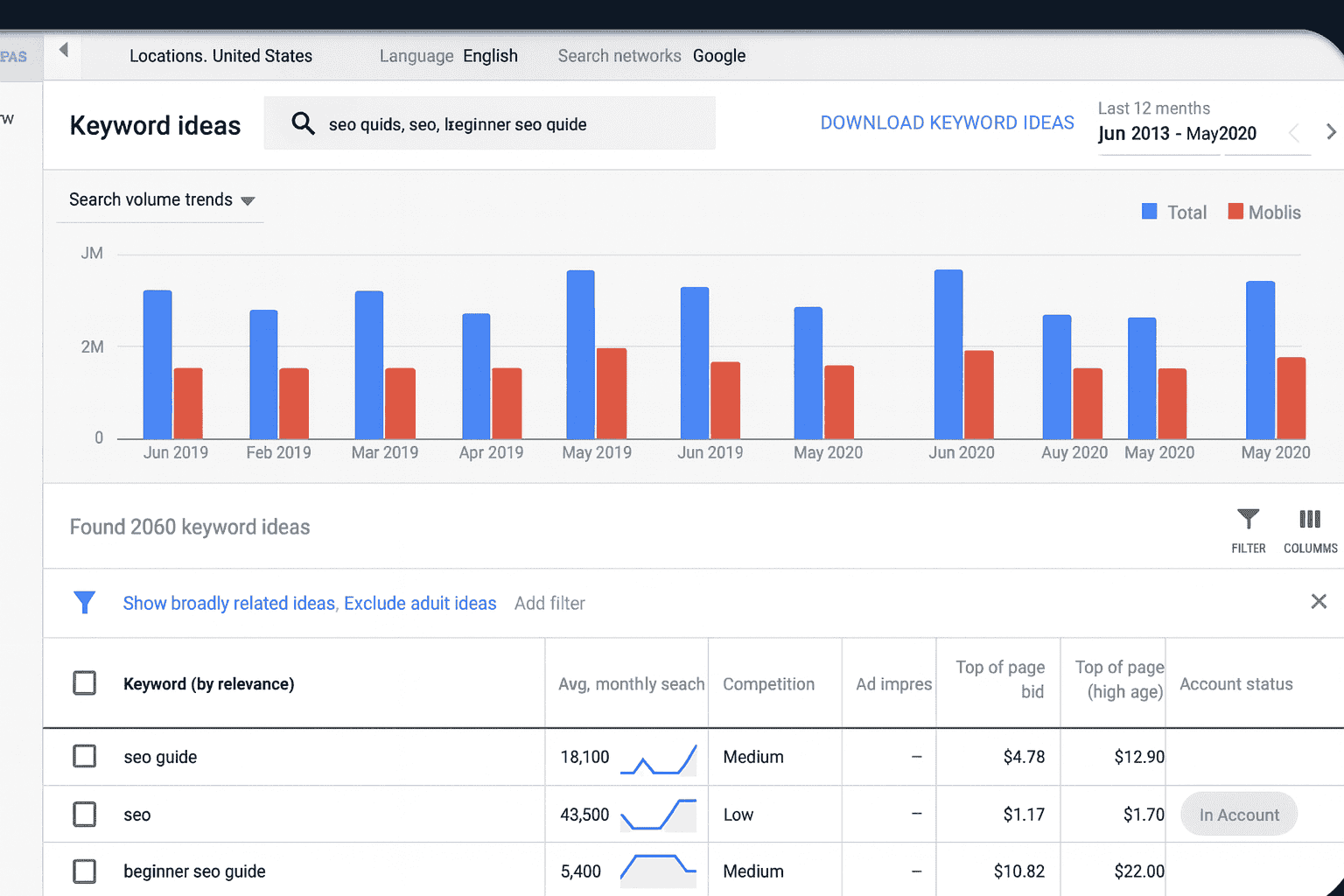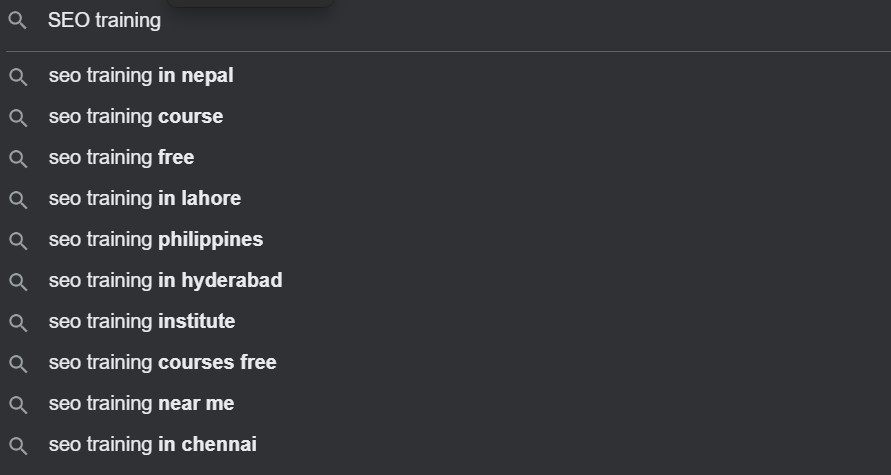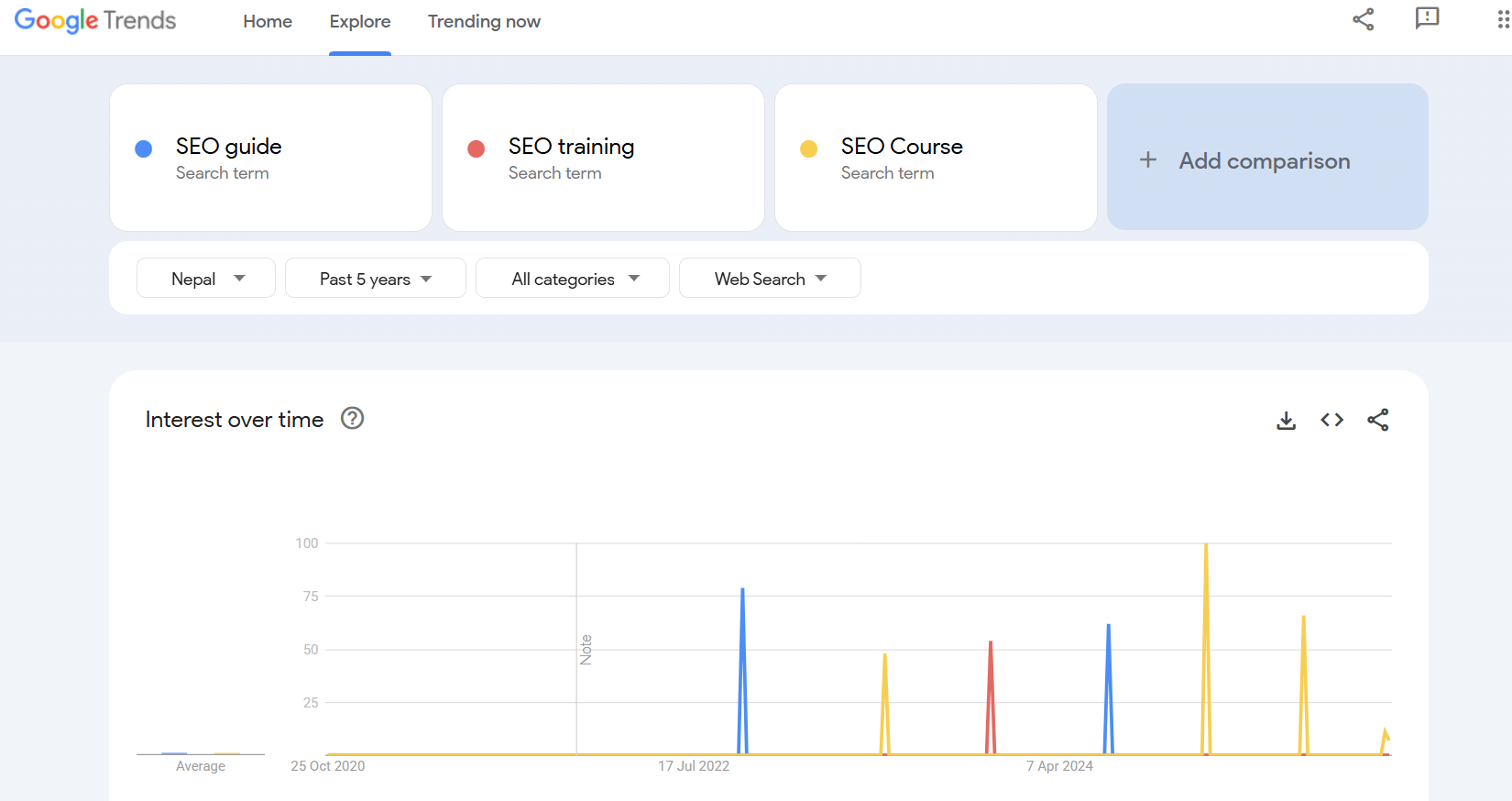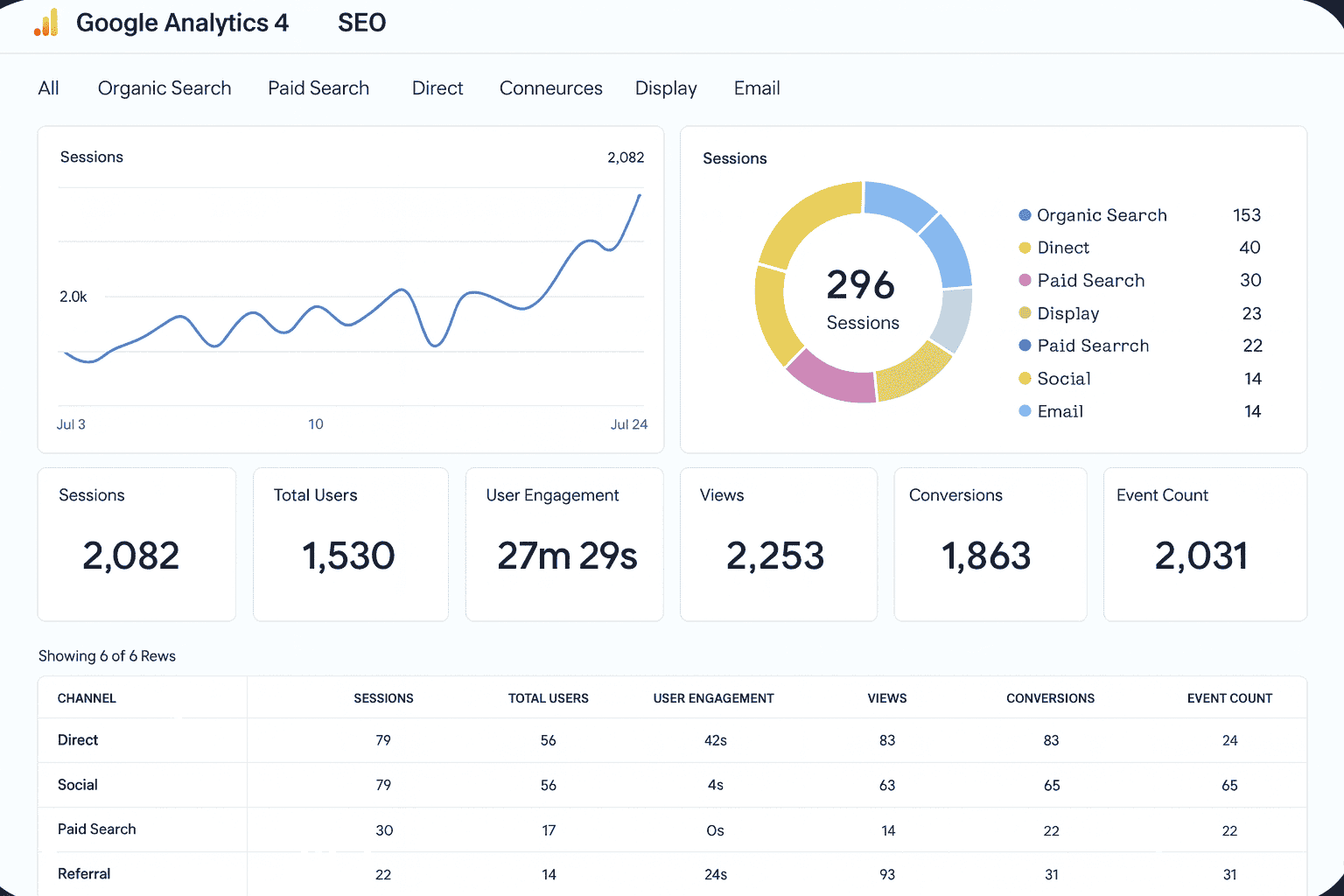How can the right SEO tools boost your growth?
You want people to actually find your videos, blog posts, or small projects online, but SEO sounds like a complicated maze. But what if I told you that you don’t need fancy, paid software to get started with a handful of free tools and the proper steps? You can learn how search works, choose strong topics, and make your site or content show up more often. Check out our essential SEO starter guide if you’re just getting started with the basics.
What SEO tools can really do for you?
SEO tools help you improve your website’s visibility on Google. They just make your work faster and your choices easier.
- Save time finding the right keywords by avoiding the guesswork and research required for each website.
- Less effort, smarter action spot technical errors, find topic ideas, and see what works without manual efforts.
- Clear feedback to learn which pages attract visitors, which don’t, and why.
- Confidence to experiment, measure results, so you can try new approaches without feeling lost or wasting time.
How can the right SEO tools boost your growth?
Consider how to increase the visibility of a single post. The right tool helps you pick a topic that people actually search for, write content that answers their questions, and fix tiny technical problems that stop Google from showing your page. Over time, that adds up: more organic traffic, more followers, and more confidence. Tools help you spend time on what matters, the small moves that compound into real growth.
The best free SEO tools for beginners in 2025, quick list (we’ll explain each)
- Google Keyword Planner
- Google Search Console
- Google Suggestions
- Google Trends
- Google Analytics 4 (GA4)
- Bing Webmaster Tools
- AnswerThePublic
- Product.ai
- Looker Studio
- Screaming Frog (free mode)
- Ubersuggest (free)
- Ahrefs Webmaster Tools
- Yoast SEO (WordPress plugin)
- SEO Minion

Google Keyword Planner
Keyword Planner shows keyword ideas and estimated search interest. It’s part of Google Ads, but you can use it for SEO research, starting with a campaign.
Key Feature:
Search volume estimates and keyword suggestions grouped by topic.
What Is It Mainly Used For?
Finding seed keywords and discovering search volume trends to help you select topics that people actually search for.
Google Search Console
A free dashboard from Google that tells you how your site appears in search, which queries bring visitors, and indexing issues to fix. Great for beginners to see real search data.
Key Feature:
Performance report (clicks, impressions, average position) and index coverage alerts.
What Is It Mainly Used For?
Tracking how Google sees your site and spotting crawl/indexing problems.
Google Autocomplete / Suggestions
The little suggestions that appear when you type in Google are a direct window into what people search. Use them for long-tail ideas and natural phrasing.
Key Feature:
Real user search phrasing and long-tail keyword ideas.
What Is It Mainly Used For?
Brainstorming topic phrasing and discovering specific questions people ask.
Google Trends
Shows interest over time for search terms and compares topic popularity across regions. Great to check if a topic is gaining or losing momentum.
Key Feature:
Trend graphs, regional interest, and related queries.
What Is It Mainly Used For?
Choosing timely topics and spotting seasonal or rising interest.
Google Analytics 4 (GA4)
GA4 tracks how people use your site (pageviews, events, where they drop off). It’s the primary tool for understanding real user behaviour.
Key Feature:
Event-driven data model and cross-device tracking.
What Is It Mainly Used For?
Measuring which pages keep visitors, where traffic comes from, and what content leads to action.
Bing Webmaster Tools
Similar to Search Console, but for Bing (and helps with Microsoft search properties). It also gives SEO reports and crawl data.
Key Feature:
Site scan, keyword research, and ingestion reports.
What Is It Mainly Used For?
Extra indexing and performance insights are valuable because some audiences use Bing, too.
AnswerThePublic
Visualises questions and phrases people search around a topic (who, what, how, etc.). It’s great for discovering content ideas framed as questions.
Key Feature:
Question-based keyword visualization and grouped suggestions.
What Is It Mainly Used For?
Finding the exact questions your audience types into search is perfect for FAQ-style posts and tutorials.
Product.ai
Product.ai is a relatively new AI product that focuses on shopping data and product recommendations. You can use it to explore product-related queries and competitive context (useful if your site is about products).
Key Feature:
Product-focused AI recommendations and product knowledge graph.
What Is It Mainly Used For?
Researching product-related intent and price/offer context for e-commerce content.
Looker Studio (Google Looker Studio)
A free reporting and dashboard tool (formerly Data Studio). Connects multiple data sources (Search Console, GA4) to build readable reports.
Key Feature:
Drag-and-drop dashboards and reusable templates.
What Is It Mainly Used For?
Creating visual reports to display traffic trends and measure the effectiveness of experiments is an excellent way to track progress and share results.
Screaming Frog (free mode)
Desktop website crawler that finds broken links, duplicate titles, missing meta tags, and other technical SEO issues. The free version crawls up to 500 URLs, which is sufficient for small sites or spot checks.
Key Feature:
Deep site crawl and technical issue reports.
What Is It Mainly Used For?
Quick technical audits and finding on-page problems.
Ubersuggest (free features)
Neil Patel’s tool provides keyword ideas, basic site audits, and content suggestions, offering free, yet limited and valuable access for beginners.
Key Feature:
Keyword suggestions, simple site audit, and content ideas.
What Is It Mainly Used For?
Fast keyword idea generation and beginner-friendly audits.
Ahrefs Webmaster Tools (AWT)
Ahrefs offers a free Webmaster Tools suite for verified sites, including a site audit, backlink overview, and keyword data, providing great “pro-level” insight at no cost.
Key Feature:
Site Audit and Site Explorer Lite for your verified domains.
What Is It Mainly Used For?
Identifying technical issues, tracking backlinks, and analyzing which pages receive the most organic traffic.
Yoast SEO (WordPress plugin)
If your site runs on WordPress, Yoast helps with on-page SEO: readable meta tags, XML sitemaps, and simple on-page checks.
Key Feature:
Real-time content analysis (readability + SEO score) and easy meta management.
What Is It Mainly Used For?
Guiding on-page optimization and helping you write more explicit titles/meta descriptions.
SEO Minion
A browser extension that helps with on-page checks, SERP preview, link analysis, and extracting data from pages. Lightweight and handy for quick checks.
Key Feature:
On-page analyzer, SERP preview and link check.
What Is It Mainly Used For?
Fast checks while browsing are great for learning and quick audits.
How to use these SEO tools to improve your ranking (step-by-step for beginners)
- Start with keywords (Keyword Planner + Autocomplete + AnswerThePublic)
- Find 5–10 topic ideas using autocomplete and Keyword Planner. Use AnswerThePublic to turn those into questions you can answer.
- Find 5–10 topic ideas using autocomplete and Keyword Planner. Use AnswerThePublic to turn those into questions you can answer.
- Check search intent (Google Trends + look at top pages in Google search)
- Are people looking for quick answers, how-to guides, or product reviews? Match your content accordingly.
- Are people looking for quick answers, how-to guides, or product reviews? Match your content accordingly.
- Write one focused page (use Yoast + manual readability checks)
- Pick one main keyword per page. Make the title clear, answer the question early, and add helpful headings.
- Pick one main keyword per page. Make the title clear, answer the question early, and add helpful headings.
- Fix technical issues (Screaming Frog + Search Console)
- Run a crawl, fix broken links, and submit an updated sitemap to Search Console. You can also check our quick fixes and tools to solve SEO mistakes if you want easy solutions for common beginner issues.
- Run a crawl, fix broken links, and submit an updated sitemap to Search Console. You can also check our quick fixes and tools to solve SEO mistakes if you want easy solutions for common beginner issues.
- Measure and iterate (GA4 + Looker Studio + Search Console)
- Track how people find the page, how long they stay, and which pages are most effective in converting. Use Looker Studio to build a simple report you check weekly.
- Track how people find the page, how long they stay, and which pages are most effective in converting. Use Looker Studio to build a simple report you check weekly.
- Repeat what works
- When a topic gains traction, create related posts and link them together.
Tiny checklist you can copy into the article
- Pick three keywords this week.
- Publish one page that answers one keyword.
- Run a technical check with Screaming Frog.
- Connect Search Console and GA4.
- Build a 1-page Looker Studio report to check weekly.
Frequently Asked Questions:
Q: Which tool should I learn first?
A: Google Search Console it shows how Google already sees you.
Q: Do I need to pay for SEO tools?
A: Not at first. Free versions give 80% of what beginners need.
Q: Free SEO tools backlink checker
A: Backlink checkers show which sites link to a page and how strong those links are. For your own site, use Google Search Console (it’s free and accurate for your data); to peek at competitors, use Ubersuggest, it gives a quick list of referring domains and top links.





